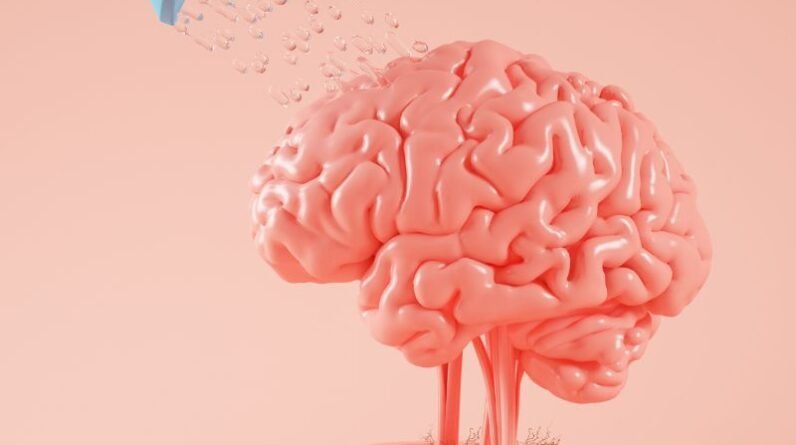
We’re empowering our minds and bodies by harnessing the brain’s inherent ability to reorganize and adapt through neuroplasticity. By understanding this concept, we can access brain healing mechanisms and induce positive changes through techniques such as brain stimulation, rehabilitation programs, and enriched environments. Mindful practices like meditation and yoga also promote neural growth, increase gray matter density, and enhance cognitive function. By incorporating neuroplasticity into our daily lives through regular exercise, cognitive exercises, and novelty stimulation, we can strengthen neural connections and adaptive pathways. As we explore this concept further, we’ll discover more ways to leverage neuroplasticity for restoration.
Neuroplasticity Fundamentals Explained
As we explore the domain of neuroplasticity, it is vital to understand that this concept refers to our brain’s remarkable ability to reorganize itself by forming new neural connections throughout life, enabling recovery from injuries and adaptation to new experiences. This brain plasticity is essential for learning and development, as it allows us to refine and strengthen neural pathways as we engage in new activities.
Neuroplasticity is not limited to early development; it continues throughout our lives, allowing us to adapt to new situations and recover from injuries. By understanding these fundamental principles, we can harness neuroplasticity to enhance our cognitive abilities and promote overall mind-body restoration. This knowledge will enable us to explore targeted strategies for cultivating brain plasticity and neural connections.
Unlocking Brain Healing Mechanisms
Understanding neuroplasticity fundamentals empowers us to harness its potential for mind-body restoration. By grasping how our brains reorganize and adapt, we can access brain healing mechanisms that facilitate recovery from injuries and enhance cognitive function. Brain stimulation techniques and targeted rehabilitation programs can induce positive neuroplastic changes, restoring lost functions after trauma.
These therapeutic interventions can be tailored to meet individual needs, promoting neural growth and adaptation. In addition, enriched environments can foster neuroplasticity, leading to significant improvements in cognitive abilities and overall brain health. By leveraging these mechanisms, we can tap into neuroplasticity’s potential for natural mind-body restoration, paving the way for enhanced recovery and improved mental resilience.
Mindful Practices for Growth
Integrating mindful practices into our daily lives can considerably enhance neuroplasticity, leading to improved cognitive function and emotional regulation. Through techniques such as meditation and yoga, we can increase gray matter density in areas of the brain associated with memory, emotion regulation, and learning. Mindful breathing can also reduce stress and anxiety, promoting cognitive flexibility and resilience.
Regular mindfulness meditation has been linked to increased connectivity in the default mode network, supporting personal growth and emotional healing. In addition, mindfulness practices can influence neurogenesis, particularly in the hippocampus, which is vital for learning and memory. By incorporating mindfulness into our routines, we can improve attention span and emotional regulation, ultimately contributing to overall mental well-being.
Neuroplasticity in Daily Life
We can harness the power of neuroplasticity in our daily lives by incorporating activities that stimulate cognitive growth and brain adaptation. Engaging in cognitive exercises, such as puzzles or learning new skills, strengthens neural connections and enhances cognitive function. Regular physical exercise promotes the formation of new neurons and prevents neuron loss, markedly benefiting overall brain health.
Practicing mindfulness and meditation also facilitates neuroplastic changes that improve emotional regulation and reduce stress. Incorporating novelty into daily routines stimulates the brain to adapt and form new neural pathways, fostering continuous learning and growth. By incorporating these activities, we can effectively stimulate neuroplasticity in our daily lives, leading to improved cognitive function and overall well-being. Quality sleep also supports dendritic growth, making it essential for effective cognitive functioning.
Enhancing Cognitive Resilience
By actively incorporating activities that stimulate cognitive growth and brain adaptation into our daily lives, we set the stage for enhanced cognitive resilience. This can be achieved through creative pursuits, such as learning new languages or musical instruments, which foster an environment that promotes brain plasticity and strengthens neural connections. Regular physical exercise also plays an essential role in maintaining cognitive function and enhancing resilience against cognitive decline.
Additionally, quality sleep and mindfulness practices support overall brain health by promoting dendritic growth, strengthening neural connections, and improving present-moment awareness. By harnessing neuroplasticity, we can stimulate brain engagement, promote healing, and ultimately enhance cognitive resilience through strengthened brain connections and adaptive neural pathways.
Conclusion
By embracing neuroplasticity, we can tap into our brain’s innate ability to adapt and heal. Research supports the theory that targeted practices, such as mindfulness and cognitive training, can stimulate neural growth and resilience. By incorporating these methods into our daily lives, we can enhance our cognitive function and foster a more balanced mind-body connection. This, in turn, can lead to improved overall well-being and a greater sense of control over our mental and physical health.






